
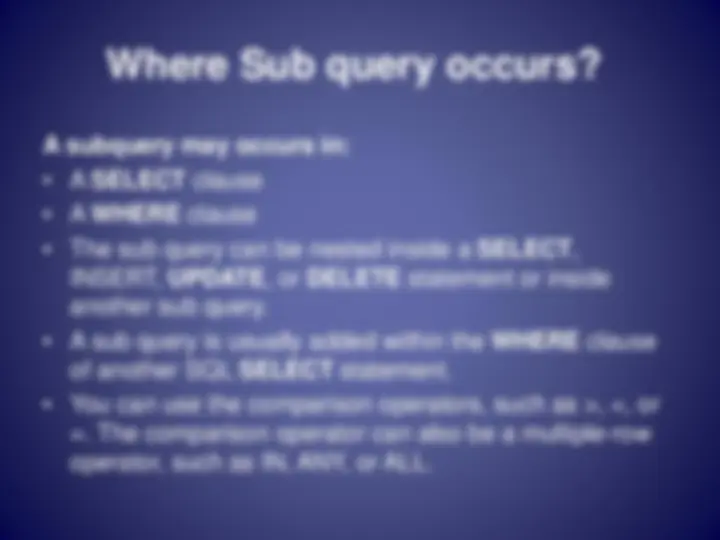
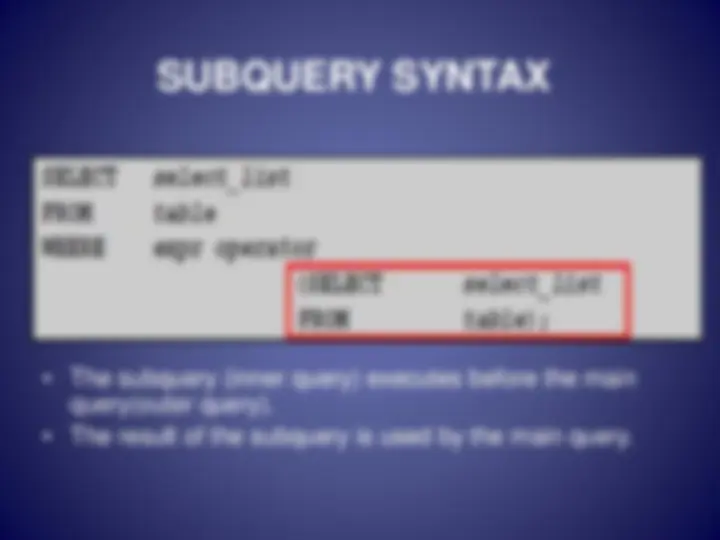


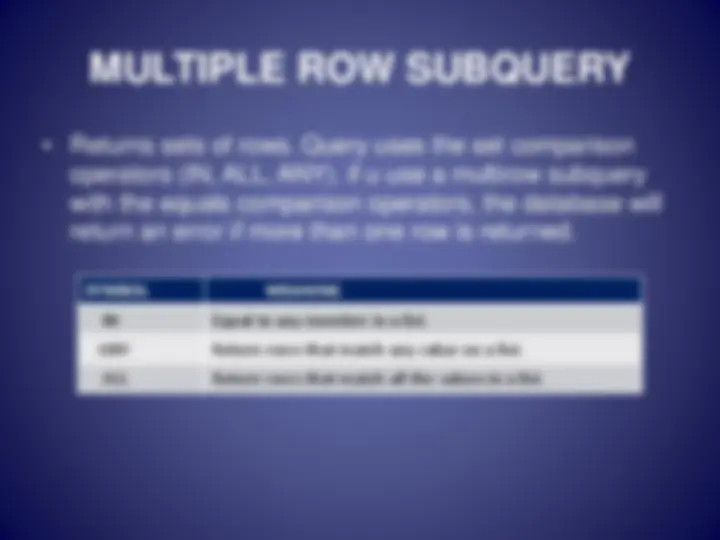
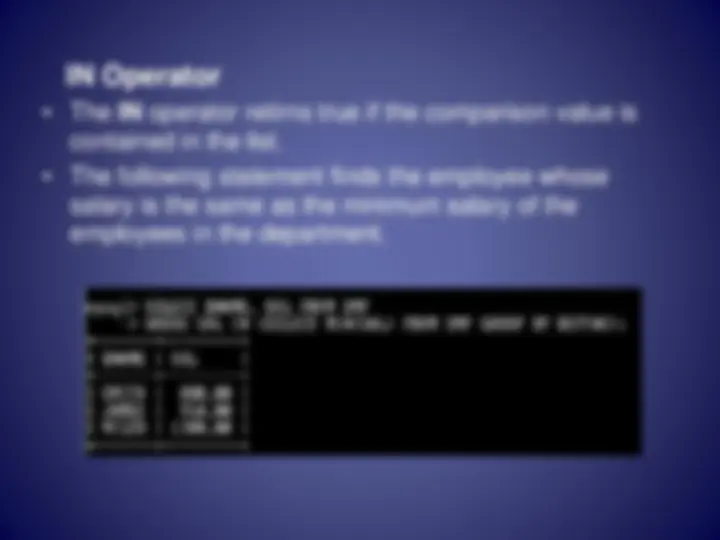
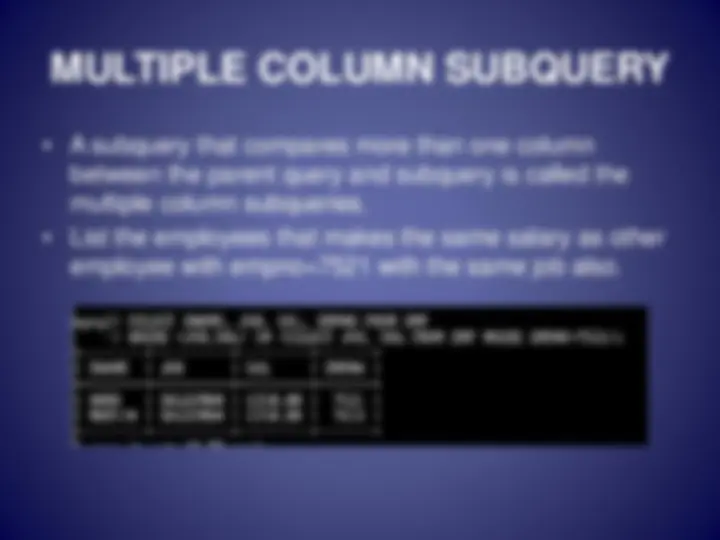




Study with the several resources on Docsity

Earn points by helping other students or get them with a premium plan


Prepare for your exams
Study with the several resources on Docsity

Earn points to download
Earn points by helping other students or get them with a premium plan
Community
Ask the community for help and clear up your study doubts
Discover the best universities in your country according to Docsity users
Free resources
Download our free guides on studying techniques, anxiety management strategies, and thesis advice from Docsity tutors
What sql subqueries are, where they can be used, and provides examples of single row, multiple row, and multiple column subqueries. It covers the use of comparison operators in, any, and all, and discusses how to delete tables in sql.
What you will learn
Typology: Lecture notes
1 / 15

This page cannot be seen from the preview
Don't miss anything!










What is SQL Sub query? A sub query is a SQL query nested inside a larger query.
SUBQUERY SYNTAX
TYPE OF SUBQUERIES
MULTIPLE COLUMN SUBQUERY
Deleting Tables